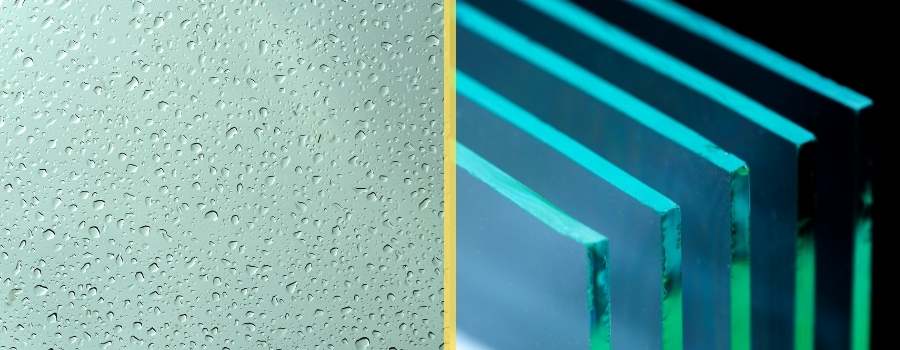
No matter where you live, there is a good chance that you or your neighbors have solar panels on the roof. If this is true for you, then you’ve likely noticed or wondered if there is a way to deal with the cleaning or protection of your solar panels.
For instance, can you put some sort of clear covering like tempered glass or plexiglass over your solar panels?
Putting clear plastic or glass over your solar panel can prevent grime and debris from building up on your solar panels and offers a layer of protection. The downside is that you will see up to a 30% reduction in efficiency.
The decision you have to make is if the extra cost of the covering and the slight reduction in efficiency is worth the long-term benefits, mainly that your panels will be protected from animals, grime, and hail…among other anomalies.
Does Plexiglass Have UV Resistance?
The type of plastic that is used in plexiglass has UV resistance. This means it resists the sun’s rays, which causes your solar panels to generate less electricity. This reduction in efficiency can be around 30%, depending on any gaps between your panels and the plexiglass.
There are also many other features that a plexiglass cover offers, such as insect and debris proof protection from rain or snow. This can help prevent tarnish to your panels and provide an extra layer of safety for them in case of accidents like hail damage!
Does Tempered Glass Have UV Resistance?
Tempered glass is a type of safety glass that has UV resistance. This resistance will reduce the efficiency of your solar panels by about 60%.
If you decide that the protection of tempered glass is worth the loss in efficiency, then it’s a decision that will need to be made every few years. The benefit of replacing this type of cover more frequently than other types is that it keeps costs down.
The downside to tempered glass is that it’s more expensive than plexiglass and can’t be cut as easily. However, the added cost may be worth the long-term benefits. This includes how easy tempered glass makes cleaning your solar panels…not just from debris
If you are planning on protecting your solar panels with tempered glass, it is important that the space between each panel be sealed so that no moisture or dirt can make its way in and damage your solar panels or any wiring or racking that you’re using.
How Much Does A Sheet Of Plexiglass Cost?
Plexiglass has an average cost of $40 but can vary from $25 to $60, depending on brand or dimensions. Cutting the plexiglass to the correct size for your solar panels and installation will add to this cost.
Much like solar panels, adding a protective layer over them has a high upfront cost with the financial benefits paying off down the line…sometimes decades later. Your panels will be protected from flying debris and tree branches that can scratch, chip, and crack your solar panels. This means that you won’t have to replace or repair them quite as often…building up savings long term.
If you choose to cover your solar panels with plexiglass, ideally you want glass that is thick enough to offer protection, but not so thick that it hinders the sun or bows under its own weight. 3/8 of an inch seems to be a common thickness that people tend to favor.
How Much Does A Sheet Of Tempered Glass Cost?
Tempered glass has an average cost of $90, but can also vary depending on size or brand. Installation costs and fabrication for tempered glass will add to the base price and will vary upon your specific needs and dimensions.
This means that the difference in cost between a standard piece of tempered glass and one cut to fit around solar panels can be quite high.
Just like with plexiglass, homeowners with solar panels that choose to cover them with tempered glass tend to favor a thickness of 3/8 of an inch. Tempered glass is more rigid than plexiglass, so bowing under its weight shouldn’t be as large of a concern.
What Are The Pros Of Covering Solar Panels With Plexiglass?

- Long-term benefits, mainly that your panels will be protected from animals, grime, and hail…among other things.
- Protection from rain or snow.
- Easier to clean than standard glass due to its nonporous and non-stick surface.
- Less expensive than tempered glass and can be cut easily for a custom fit. This makes it good for covering all but the smallest spaces between your solar panels.
- Has an average cost of $40 and can vary from $25 to $60, depending on size or brand.
What Are The Cons Of Covering Solar Panels With Plexiglass?
- Not as strong or protective to your solar panels, which can lead to breakage and efficiency losses.
- Needs replaced more often than tempered glass because of the lack of UV resistance.
- Some people don’t like how plexiglass looks
- More difficult to cut than tempered glass.
- Doesn’t offer the same protection against debris, rain, or snow as a protective layer of tempered glass would provide.
What Are The Pros Of Covering Solar Panels With Tempered Glass?
- Long-term benefits like longer efficiency life reduced maintenance costs and less risk of damage.
- Aesthetically pleasing for some people because it is clear (not tinted).
- Can be cut to fit any space between panels with ease using a circular saw. This means that you don’t need to custom design your solar panel system before installation.
- Has an average cost of $90 and can vary from $50 to $120, depending on size or brand.
What Are The Cons Of Covering Solar Panels With Tempered Glass?
- More expensive upfront than plexiglass because it is thicker and requires installation by a professional. This means that if you want a large number of solar panels covered with tempered glass, then the upfront cost will be much higher than plexiglass.
- More rigid and bowing underweight is a concern because it has less give to it than plexiglass does. This means that you need to take caution in choosing how thick your tempered glass should be for best results or risk having it break under its own weight.
- Not as strong or protective to your solar panels, which can lead to efficiency losses and increased maintenance costs due to potential damage.
- Not aesthetically pleasing to some people. Mirror or other materials can be added to the top of tempered glass, but this will only offer a limited amount of protection and is an expensive additional cost.
What Do I Need To Know About Covering Solar Panels With Plexiglass Or Tempered Glass?
It’s always difficult to pinpoint everything you need to know when it comes to covering your solar panels with plexiglass, but here are a few points you should have on your mind if you are considering it:
- Measure your solar panel size and purchase plexiglass to fit accordingly.
- If you find that a particular material doesn’t look that good to you, then choose another type of covering material or other types of materials such as mirroring to add an aesthetic flair to your solar panel system.
- Make sure you install the covering material according to the manufacturer’s instructions and/or with assistance from a solar professional if needed.
Final Thoughts
As with anything solar, planning and asking questions are highly important. Solar is a huge investment by itself, and adding some sort of protective layers like plexiglass or tempered glass is going to add thousands to that initial cost.
You need to determine if the cons of adding this layer are going to outweigh the benefits…mainly if the loss in efficiency will mean you’ll need extra panels to make up the difference, or if you can get by with less solar energy.
While you may be able to add a covering later on you may want to factor in the decision from the get-go…ask your contractor if your roof will be able to handle the extra weight of plexiglass or tempered glass plus the hardware to mount it. Try to figure out if any tree branches that live near your home might be a problem…what’s cheaper, a protective layer, or trimming the tree every few years?
You’re paying your solar professional a lot of money, so ask about protecting your solar panels with plexiglass or tempered glass…or see if there are other options available.
